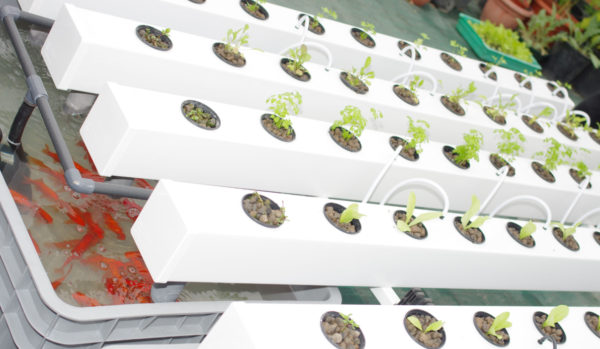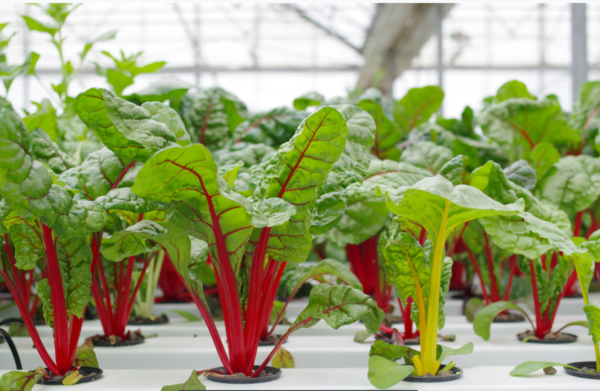Since the dawn of agriculture, the way we grow our crops has begun by planting a seed in soil. Starting with an originally simple method, over time, we have managed to innovate and improve. Growing methods have been altered, tools to make our lives easier have been forged, and chemicals and pesticides have been formulated to grow bigger and better crops. However, a new age is emerging. With climate concerns and global instability increasing, there has never been a better time to become environmentally conscious with our agricultural practices, and a need to increase yields in a shorter period is paramount.
Cue Aquaponics: the word is a fusion of aquaculture and hydroponics, as the practice is a combination of each of these. It is the process of cultivating crops alongside fish. Plants are grown above water in a literal fish tank. The fish waste is pumped through a biofilter with nitrates, which then provides nutrients for the crops. Once the crops have taken the excess nitrogen from the water, thus purifying it, this is then pumped back into the fish tank. This process can then be repeated.

The method has become increasingly popular in recent years, but is certainly not a recent phenomenon. Basic examples are known of throughout history, particularly in the Aztec culture and in early Chinese civilizations. However, these do differ greatly from today’s more sophisticated set ups.
There are numerous options for what can be produced with the technique of aquaponics. As this is a method that can be used on an industrial scale or simply by hobbyists, the fish used can either be edible or ornamental. The most common fish that tend to be used and farmed are trout, catfish, carp, and tilapia. Aquaponics is currently most successful at producing leafy greens; however, a variety of food products can be harvested, such as herbs, salad greens, lettuce, kale, chard, bok choi, peppers, cucumbers, tomatoes, beetroots, radishes, carrots, onions, broccoli, cauliflower and much more!
One of the most exciting aspects of aquaponics is the vast amounts of positives it has over traditional methods of farming. It is almost completely carbon neutral and environmentally friendly, it uses less water, less land, a minimal workforce is required, it doesn’t leave areas with depleted, over-farmed soil, and the fertilizer used is natural, meaning no mining or manufacturing is required. Both the fish and the crops produced are organic, and the method means that you get two for one when it comes to your yield – greens and protein! Farming can also occur all year round, as you can do it inside and anywhere, which minimises the carbon footprint. As food won’t have to travel as far to get to your plate, more of the nutrients within the crops will be maintained and it will taste much fresher. As it is self-sustaining and able to yield crops in half the time, surely aquaponics is going to become the preferred method of farming in the near future.
Due to the overwhelming positives of aquaponics, it is believed the industry is due to rise rapidly. Some suggestions say that the market will be worth approximately $1.3billion – with a rising global population, it could be the future of agriculture. It uses less space, and grows food quicker, and therefore better responds to supply and demand. Though the industry is in an early stage of its development, it could become an effective way of feeding everybody.
So, one day in the near future when you tuck into a salad, this may well have been grown by a fish! That’s definitely food for thought.








